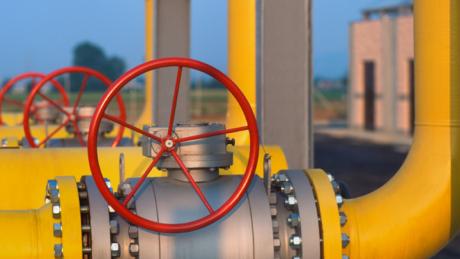
Gas Supply Diversification Prospects Uncertain in Central and Southeastern Europe
Publication: Eurasia Daily Monitor Volume: 10 Issue: 142
By:

The demise of the Nabucco-West gas pipeline project leaves Romania and Hungary dependent on Russian gas imports, and scrambling for diversification solutions that variously look sub-optimal or doubtful. Conversely, the go-ahead to the Trans-Adriatic Pipeline (TAP) project inspires some hopes for trickle-down supplies of natural gas in the Adriatic seaboard countries of Albania, Montenegro and Croatia. Whether Bulgaria loses outright or can mitigate the damage is far from clear, given the many external and internal variables involved in this case.
In countries without access to seaborne supplies of liquefied natural gas (LNG), the post-Nabucco default options include: building inter-connector pipelines with reverse-flow capability, adding gas storage capacities, and advancing energy market integration on a regional basis, within the European Union’s evolving energy market (www.naturalgaseurope, July 24, 29).
Hungary is a front-runner in this regard. The inter-connector pipeline Hungary-Croatia and the network inter-connection Hungary-Romania are already operational, with annual capacities of 6 billion cubic meters (bcm) and up to 5 bcm, respectively. The Slovakia-Hungary inter-connector (with a capacity of 5 bcm annually) is due for completion by 2015.
However, the gas volumes actually available are nowhere near the capacities of those inter-connectors. The Croatia-Hungary inter-connector is destined in part to carry LNG-sourced gas from a long-discussed terminal at Krk in Croatia. That terminal, however, remains an intention, not yet an actual project. The line under construction in Slovakia is mainly intended to supply Central Europe’s landlocked countries with LNG-sourced gas from Swinoujscie, the terminal under construction on Poland’s Baltic coast. Information has yet to appear in the public domain about possible volumes, prices, destinations and time-frames.
In Romania, the network inter-connection with Hungary (see above) is not bi-directional thus far. The Romanian government seeks to prevent even a small-scale outflow of gas cheaply extracted in Romania toward higher-priced European markets. This is understandable politically, since Romania’s own gas resources are dwindling, and cheap local gas helps at least for the time being to offset the exorbitant price of Russian gas supplies. Meanwhile, the inter-connector pipeline Bulgaria-Romania (with a projected capacity of 0.5–1.5 bcm per year) has experienced a late start of construction in 2012. Its supply source does not seem to be identified on either side. Neither has Bucharest identified the supply source for the inter-connector Romania-Moldova pipeline (with a capacity of 1.5 bcm annually), construction of which is planned to start this year.
In the short and even medium term, these inter-connectors can hardly be regarded as supply diversification solutions. They barely make a dent into these countries’ import dependency on Gazprom. These inter-connectors can mainly be regarded as resiliency solutions. They would enable these countries to survive gas supply cuts, such as Russia imposed in 2006 and 2009 on Ukraine with devastating chain reactions far afield. Indeed, those crises jump-started the European Union’s policy to promote gas market inter-connectivity and integration.
But the inter-connectors will not significantly reduce import dependency on Russia unless sizeable volumes of natural gas enter this region from non-Russian supply sources. Supply diversification involves meaningful volumes to substitute for Gazprom volumes. The inter-connectors hardly provide such volume substitution. That had been the rationale of the Nabucco-West project, now lost to the countries along this route.
On the Adriatic seaboard, the TAP consortium proposes to work with Albania, Montenegro, Croatia and Bosnia-Herzegovina toward construction of a gas supply pipeline that would run through these countries. This coastal line would start from Albania at Fier, the point at which the TAP overland pipeline is planned to submerge into the Adriatic Sea en route to Italy. The coastal line, dubbed the Ionian-Adriatic Pipeline (IAP), would run some 515 kilometers from Albania via Montenegro to the Croatian port of Split, there to connect with Croatia’s pipeline grid, and with a spur into Bosnia-Herzegovina. The proposed overall capacity is for 5 bcm per year to be offloaded in these countries.
The TAP consortium, the governments involved, as well as Croatia’s and Bosnia-Herzegovina’s state pipeline companies Plinacro and BH-Gas, have signed a number of declarations, memoranda-of-understanding (MOU), and agreements of intent during 2007–2012 to promote this overall concept (https://www.energy-community.org/, retrieved July 30, 2013). The TAP project consortium has confirmed the continuity of this intention, albeit in very general terms when announcing the consortium’s restructuring on July 30 (TAP press release, July 30).
All along, this proposal raised more questions than it could answer about those 5 bcm (one half of TAP’s entire proposed annual capacity well after 2020) or about financing a 500-kilometer pipeline in these small and mostly poor countries. The proposal looks still less convincing following TAP’s reorientation toward highly lucrative markets in western and northwestern Europe. The consortium would be bound to sell as much of its Caspian gas as possible in those European countries. TAP plans to invest in pipeline upgrades along the entire route from southern Italy to the North Sea for its Caspian gas (see EDM, July 31).
Croatia is fully supplied with gas, 60 percent from internal production and 40 percent from imports, mostly from non-Russian sellers. Meanwhile, Albania and Montenegro do not use any natural gas and are not connected to a pipeline grid. Azerbaijan’s State Oil Company (SOCAR) considers the possibility of introducing natural gas usage to Albania, building a gas distribution grid in the country and supplying it with Azerbaijani gas. On July 25, SOCAR president Rovnag Abdullayev met in Tirana with Prime Minister Sali Berisha and Socialist Party leader Edi Rama, winner of the recent parliamentary elections, to discuss that possibility (SOCAR press release, July 25). This seems more realistic in terms of supply volumes and spin-off investment from TAP, compared with the IAP proposal.




